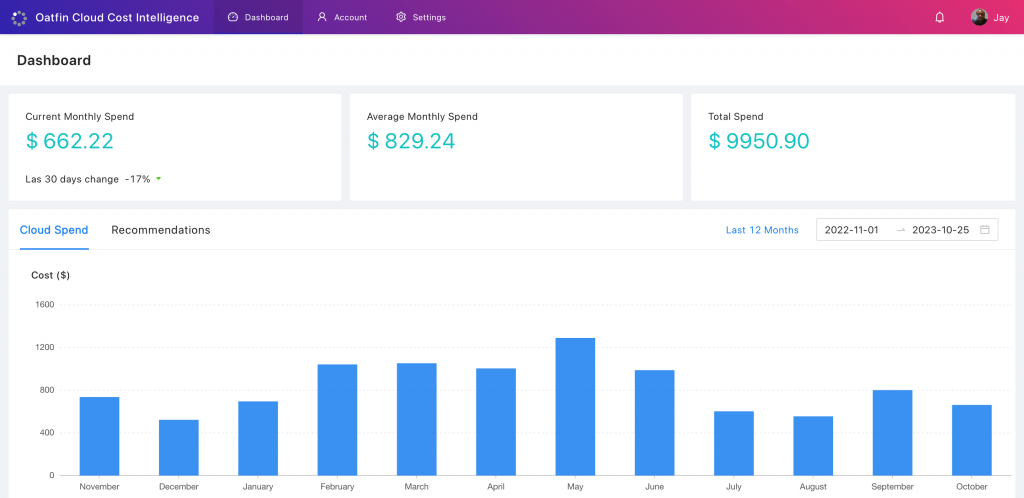Thank you for subscribing to Cloud Musings! If you haven’t subscribed yet, please consider subscribing on LinkedIn and Substack to receive automatic updates when I publish new editions.
It’s been a while since our last regular update, but we’re excited to announce that we’re getting back into our monthly cadence. As we continue our seed fundraising journey, we’d greatly appreciate introductions to more investors and enterprise partners who share our enthusiasm for what we’re building at Oatfin.
Over the past few months, we’ve been hard at work planning the next version of our product and crafting a roadmap. Since the launch of Oatfin Cloud, we’ve received invaluable feedback from our users. One topic that continually surfaces as a challenge for our customers is cloud cost management. While AWS offers numerous benefits, managing costs can often be a significant hurdle. For example, one startup I worked at, we spent north of $30,000 per month without a clear understanding of why.
Introducing Oatfin Cloud Cost Intelligence (Beta)
This week, we launched Oatfin Cloud Cost Intelligence in beta, which uses AI to simplify cloud cost management on AWS.

Here are some of the key challenges we’re addressing:
- Unpredictable Costs: One of the most significant issues with AWS is the unpredictability of costs. Usage can vary from month to month, and it’s challenging to estimate how much services will cost.
- Hidden Costs: AWS has hidden costs, such as data transfer fees, storage costs, and charges for additional services or features. These can add up quickly and catch organizations by surprise.
- Lack of Cost Visibility: Many organizations struggle with a lack of visibility into their AWS spending. Without proper monitoring and reporting tools, it’s challenging to identify cost-saving opportunities.
- Complex Pricing Models: AWS offers complex pricing models with various pricing tiers, discounts, and options. Understanding these models can be challenging, making it easy to overspend.
- Lack of Cost Accountability: Without proper cost allocation and accountability mechanisms, different teams or departments within an organization may overspend without realizing it.
Solving the cloud cost problem using AI is indeed complex, but we firmly believe that AI can help optimize cloud costs by predicting usage, recommending resource allocation, and identifying cost-saving opportunities.
Our Approach in a Nutshell:
- Data Collection: We collect data on AWS cloud usage, such as historical billing data, resource usage metrics, and other pertinent information.
- Data Preprocessing: We clean and preprocess the data to make it suitable for AI modeling, removing irrelevant data and normalizing values.
- Feature Engineering: We create meaningful features from the data, such as CPU usage, memory usage, or user behavior, which can be used for modeling.
- Model Selection: We choose an appropriate AI model for the problem, with options like time series forecasting, regression, and reinforcement learning models.
- Model Training: We train the selected AI model on the preprocessed data.
- Cost Prediction: Using the trained model, we predict future cloud costs.
- Recommendations: Based on the model predictions, we generate recommendations to optimize cloud costs.
- Monitoring and Continuous Learning: We continually monitor the cloud environment, update the model with new data, and adapt recommendations as the environment changes.
We welcome any feedback you may have and invite you to participate as beta testers.
Thank you for reading and being a part of our journey at Oatfin!
Jay